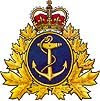For the folks of Wood's Harbour, NS...
I know there is much grief and heartache in your community, as I sit and write this. I know there are calls to resume the search for your loved ones who are lost at sea. Rumors and speculation about what might have been spotted, by whom and when, will always arise in instances such as this, fuelled by a sense of desperation and a natural unwillingness to accept the inevitable truth. Grasping at straws, is a term which comes to mind and I can understand this state of mind and soul absolutely. It is a completely human and natural reaction to the mind-numbing pain that lances its way through the hearts of the residents of Wood’s Harbour, notably the families and friends directly affected by the loss of the Miss Ally.
What is actually known? They were about 120 miles Southeast of Liverpool, NS in mountainous seas (10 metres) and hurricane force winds. The first signal of trouble was the intercept of an EPIRB transmission at around 11:00pm on Sunday evening. This device will normally transmit when a vessel has sunk, as it is activated by water. Some models can also be activated manually. At no time during the investigation of this incident, was it ever even suggested that there had been a distress call intercepted on Marine VHF Channel 16, prior to the EPIRB being activated. This in itself tells us much. It means quite simply that the boat had capsized before any of these young men could make it to the radio to report their situation. This forcibly leads to the next question: where were the lads on the boat when she capsized? Were they down below, save for the one or two who might have been in the wheelhouse, guiding her through the storm? Were they up top on deck? Had any been lost over the side before she was capsized? Were they wearing their immersion suits, or simply the yellow ‘canary suits’ over their work clothes?
There have been credible reports of a life raft having been spotted. Had this life raft been properly secured to the Miss Ally, it would have automatically deployed after the vessel had sunk, released by a hydrostatic cord which would then had allowed it to float to the surface, the fiberglass clamshell separating and the life raft self-inflating. Once the raft had reached the surface, if there was no one close by to grab it those hurricane force winds would have taken it and sent it skittering across the waves. Sea anchor deployed or not. As one of the local residents quipped: “Like a balloon on the water”. It is also possible that the life raft was manually released from it’s cradle and the painter cord pulled to inflate it…
When I think of shipwrecks and souls lost at sea, I am often reminded of that poignant line penned by Gordon Lightfoot, when he wrote of the Edmund Fitzgerald:
"Does anyone know where the love of God goes... when the waves turn the minutes to hours?"
I have read comments by some on various news sites, that would imply that if these lads had come from prominent families, their remains would already be ashore somewhere. The absolute idiocy of such a remark cannot be overstated. Clearly it comes from someone who has no understanding whatsoever of SAR procedures and even less regarding the courage and dedication of those who provide these vital services to Canadians. To even suggest that the degree of response to such a tragedy is based on some mythical socio-economic class structure, is the very embodiment of howling ignorance and an insult to those who dedicate their lives to the safety of others. It would follow that their feet have likely never touched the deck of any boat of ship, much less spent any time at sea. I would go so far as to remind them that the body of Michel Trudeau, son of the late Pierre Elliott Trudeau, still lies at the bottom of Kokanee Lake in British Columbia. An area far ‘easier’ to search than the vast expanses of the Atlantic Ocean and one not subject to severe wave and current action.
I am a man of the sea, having spent many years in the naval service of my country and much of that time at sea proper. The survival time of a person immersed in the waters of the North Atlantic, notably in the winter months, is about 6 minutes. The most one could hope for is 30 minutes. The following link provides ample graphic figures for Survival Rates in Cold Water as drawn up for Transport Canada and published by the US National Transportation Safety Board. Bear in mind the figures quoted in this report and the accompanying chart, then remember that the search itself lasted over 36 hours:
http://www.ntsb.gov/news/events/2010/fishing_vessel/presentations/5-Hiscock-CBrooks-Survival-In-Cold-Water-2001.pdf
Possibly the worse aspect of losing a loved one at sea, is that we are deprived of that final goodbye. There is no known grave to revisit and mourn over. They are simply, suddenly gone forever from our lives. There is a lack of continuance. There is no final closure to mark the end of that life. If at all possible, should efforts be made to retrieve the vessel itself and recover the remains of any who were onboard? In my humble opinion certainly, if time and resources permit. Regardless of the situation, there will always remain this seeming chasm between what could, what should and what ultimately will be done. I cannot put myself in the position of the families affected, but as a sentient and somewhat compassionate human being, I hope as much as anyone could that there may yet be some measure of comfort for the residents of Wood’s Harbour.
















No comments:
Post a Comment